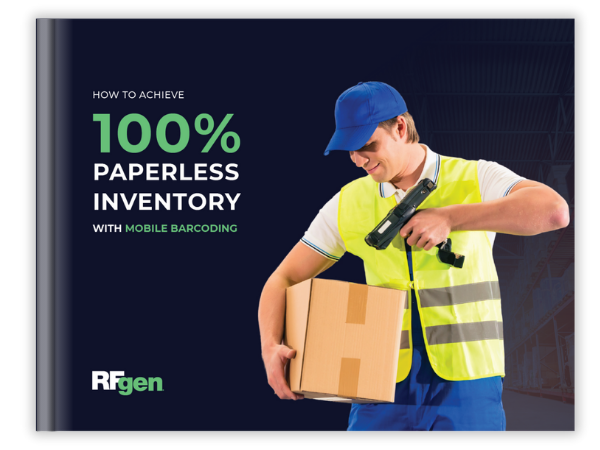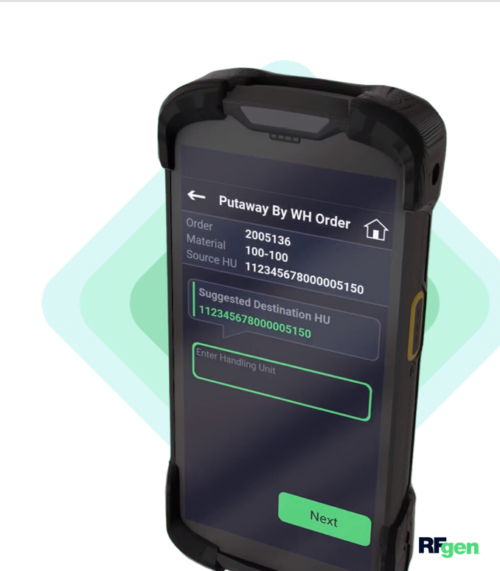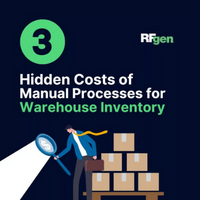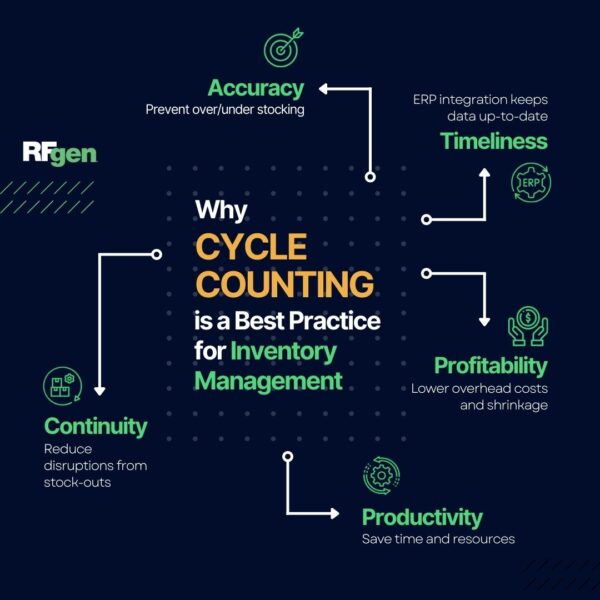How Perpetual Inventory Systems are Transforming Business Operations
- Digital Transformation
- Inventory/Warehouse

Have you ever wondered how the world’s top businesses maintain perfect harmony between their sales and stock levels? How these organizations seem to flawlessly keep goods flowing while ensuring they never miss a beat in customer satisfaction?
Wonder no more. The answer lies in modern inventory management best practices. Specifically, the use of perpetual inventory systems.
What is a perpetual inventory system?
Perpetual inventory management relies on technology to track inventory with timely data and a high degree of accuracy.
These systems not only streamline inventory control, but also transform warehouse processes into a powerful tool for competitive advantage.
Imagine the impact on your operations if you could all but eliminate stockouts and overstocks. Or reduce carrying costs. Or have reliable visibility at all times. Or deliver exactly what your customers ordered with perfect accuracy.
Perpetual inventory methods offer these benefits and more.
In this article, we will explore the implications, benefits, and implementation of perpetual inventory systems.
Understanding Perpetual Inventory Systems
A perpetual inventory system is a method of inventory management in which transactions are recorded in real time, providing continuous updates to stock levels.
If your operation uses Enterprise Resource Planning (ERP) software, the perpetual inventory system updates the ERP as inventory transactions occur.
To ensure that updates are recorded as they happen, perpetual inventory systems use a combination of software and barcode scanning.
By integrating these technologies with the system of record (e.g. ERP system), every transaction is recorded instantly. Stock levels and order statuses are adjusted automatically. As a result, inventory counts are always up to date.

How to Achieve Real-time Paperless Inventory
GET THE GUIDE »Technologies Used in Perpetual Inventory Systems
Perpetual inventory needs the right technologies to maintain real-time speed. Essential tools may include:
- Barcode scanners
- Tablets or smartphones
- Radio-frequency identification (RFID) tags
- Internet of Things (IoT) sensors
- Point-of-sale (POS) systems
- Voice picking technology
These physical technology systems are supported by robust inventory management software that integrates with other business systems.
Today’s best inventory management software is built for mobile devices. This way, workers can scan and process inventory wherever they work.
To get perpetual inventory for an ERP, organizations must adopt a high-performance mobile inventory management system.
By integrating some or all of these technologies (including mobile), the business gains a holistic view of inventory levels, sales patterns, and potential issues in real time.

Your Guide to Mobile Inventory Management Systems
LEARN MORE »Comparison with Periodic Inventory Systems
In contrast to a perpetual inventory system, a periodic inventory system is a methodology in which updates are made in batches. It’s common for inventory records to be updated at the end of the day or the end of an accounting period.
Naturally, periodic inventory management is sluggish and inefficient. Data is always lagging and visibility is all but absent. Meanwhile, manual processes leave many opportunities for human error.
Needless to say, periodic inventory systems represent the old way of handling stock.
Many warehouses hold on to periodic inventory systems because they are perceived as low cost or just the way they’ve always handled goods. They fail to realize the significant amount of overhead bloat and inefficiency these systems create.
For instance, processing inventory or performing physical counts requires significantly more labor and can lead to discrepancies due to theft, loss, or data entry errors. Unreliable stock records result in wasted time and money, not to mention added stress.
Whereas perpetual inventory provides continuous insights, eliminating the guesswork and inaccuracies associated with manual counts and delayed reporting.
Only with consistently accurate inventory counts can businesses make informed business decisions that positively affect profitability.

3 Hidden Costs of Manual Processes
DOWNLOAD NOW »Key Advantages of Perpetual Inventory Systems
Companies that implement a perpetual inventory system see many compelling benefits over manual processes. These benefits include:
Real-time Data and Accuracy
The real-time functionality of perpetual systems ensures that inventory records are always current. Compared to paper processes and data entry, the perpetual inventory method leads to drastically fewer errors.
It also eliminates the gap between when work is performed and when it is entered into the system. As a result, overstocking and understocking become far less likely.
With highly accurate inventory data, organizations can bolster operations and maintain customer trust.
Enhanced Warehouse Efficiency
Once inventory movements are updated in real time, managers can pivot quickly. This applies to reordering, sales strategies, allocation of work, and nimbleness to adapt to changing conditions.
Optimally stocked shelves mean picking processes don’t get bottlenecked by stockouts, supplying production and outbound steps with seamless continuity.
Technology plays a large role here. In addition to keeping things moving, solutions like mobile barcoding can also greatly enhance worker productivity and process efficiency by 30% or more.

Aerospace Company Improves Warehouse Efficiency by 40%
READ THE FULL STORY »Cost Management and Reduction
Live, accurate information is essential to reducing overhead and labor costs. Excess inventory can be trimmed. Meanwhile, reliable data helps reduce emergency restocking and expensive last-minute shipping fees. Holding costs such as storage and insurance also go down.
For businesses that handle electronics or perishables, real-time operations lower the risk of obsolescence or spoilage of goods.
Regulatory Compliance and Reporting
Many organizations operate in regulated markets. Regulation means compliance, and compliance hinges on being able to quickly pull the necessary data on demand.
In this way, accurate inventory records facilitate compliance with government and industry regulations while also enabling more precise financial reporting.
During an audit or recall, a perpetual inventory system’s real-time data allows requested information to be easily accessed and verified. This not only speeds up the audit process but positions the company in an agile state of recall readiness.
Improved Customer Satisfaction
At the end of the day, fulfilling customer needs stands above all in terms of importance. Leveraging a mobile inventory solution that enables a perpetual inventory system helps boost customer service.
Some of the ways perpetual inventory systems improve customer service include:
- Faster order fulfillment
- Up-to-date stock levels
- Fewer returns and chargebacks
- More perfect orders
- Reduced bottlenecks or delays
Challenges and Considerations
Despite the many benefits of perpetual inventory systems, there are also several challenges and considerations to keep in mind. Addressing these issues will help ensure the system functions effectively and delivers the intended benefits.
Handling Data Inaccuracies
Even the most sophisticated systems can encounter data inaccuracies due to human error, scanning errors, or technical glitches. To mitigate these issues, businesses should implement checks and balances such as routine audits and cross-verifications between the digital and physical inventory.
Training employees on proper scanning techniques and maintaining the hardware in good working condition are also crucial steps.
If adopting an advanced barcode solution like RFgen, the software validates all data against the ERP, preventing invalid inputs from being entered. Human error in regular transactions is very unlikely. Because of this, less effort is required to reconcile inaccurate data.
Periodic Audits and Physical Counts
While perpetual inventory systems significantly reduce the need for frequent physical counts, they do not eliminate the need for periodic audits completely.
These checks are necessary to ensure the accuracy of the system and to identify any discrepancies that might indicate issues like theft, loss, or damage.
Regularly scheduled physical counts can serve as an additional verification layer to reconcile digital records with physical reality.
Alternatively, implementing a system of cycle counts may prove more effective. Automating as much of the cycle counting process as possible with intelligent mobile software is advisable.

The Complete Guide to Cycle Counting Best Practices
READ NOW »Security Concerns
With inventory data being stored and processed digitally, cybersecurity becomes a paramount concern. Therefore, it’s vital to take the necessary steps to protect business data from unauthorized access, data breaches, and other cyber threats.
This involves implementing strong security protocols, regular security audits, and possibly hiring dedicated IT security staff.
A mobile data collection can add an additional layer of security by acting as the hardened exterior barrier shielding your ERP from outside threats.
Implementing a Perpetual Inventory System
When transitioning to a perpetual inventory system, it’s important to be strategic. Walking into such a big change can be disastrous without appropriate planning.
During your preparation, be sure to:
- Evaluate your current inventory processes
- Determine needed integration points
- Research potential solutions and vendors
- Create a plan for effective change management
Finding the right solution provider to partner with is essential to ensuring a successful implementation.
For instance, at RFgen Software, customers engage in a strategic, collaborative partnership where experienced consultants can advise on best practices, areas that will generate maximum efficiency gains, and ways to improve operations.
Once partnered with a technology provider, you can then connect the new solution to other business systems, such as ERP (Enterprise Resource Planning) software, IoT sensors, databases, and so on.
After integration is complete, it’s time to train your workforce on the new technology. Training should include how to use the system, how to interpret the data provided by the system, and how to troubleshoot common issues.
If you’re using mobile inventory software with a modern UI/UX, then training becomes much faster and simpler for users. At RFgen, we find that using an intuitive, consumer-like interface helps new users learn the software in 80% less time.
Later, ongoing support and training refreshers can help keep workers operating and optimal effectiveness.
Modern UI/UX for Perpetual Inventory Mobile System
Integrating Perpetual Inventory Systems with Other Business Functions
It’s better to integrate your perpetual inventory technologies with other key business functions than to let it operate in a silo. Connecting disparate systems can significantly enhance operational efficiency and visibility while streamlining data flow across departments.
Some things to consider—
Critical Integration Points
What are your critical integration points? Consider how and where your inventory data can be used.
For instance, integrating a mobile inventory solution with your ERP system can extend the ERP’s capabilities to point-of-work. This equips frontline staff with the ability to transact against the ERP, no matter where they work.
Another integration point may be purchasing and supplier management. Connecting inventory systems with purchasing ensures that procurement decisions are based on current stock levels and forecasted demand, optimizing inventory turnover, and reducing excess items.
Accounting and finance is another area to consider. Integration with financial systems (in addition to the ERP) ensures that inventory transactions are automatically reflected in financial statements, aiding financial analysis and reporting.
If your business uses a sales and customer relationships management (CRM) system, then consider integrating it with your new inventory system. This integration allows sales teams to access up-to-date inventory levels and product information. In doing so, they can better manage customer expectations and upsell or cross-sell based on availability.

Symbiosis & Synergy: Consulting, ERP, and Inventory Management
LEARN MORE »Ongoing Management and Optimization
Implementing your new perpetual inventory system is only the first step. To maintain the system will require a strategy for ongoing management and optimization.
In your strategy, include:
- Regular Updates and Maintenance: Keep all systems updated to ensure they work efficiently together and to protect against security vulnerabilities.
- Continuous Training and Support: Regularly train staff on how to use the integrated systems effectively and provide ongoing support to address any issues that arise.
- Performance Monitoring: Regularly review the performance of integrated systems to ensure they are meeting operational needs and adjust as necessary.
- Expanding Automation: With a mobile solution, you may wish to expand efficiencies with added capabilities. Talk to your software provider about best practices for expanding your solution footprint.
The Best Perpetual Inventory System is Mobile
In today’s fast-moving supply chain, relying on outdated periodic inventory methods leaves your business at risk of falling behind. Instead, adopting a perpetual inventory management system is a must. Modern perpetual inventory systems are almost always mobile. By implementing a robust mobile inventory system, your organization can reap the benefits of real-time inventory and asset management, positioning your operations for scalable growth and profitability.





